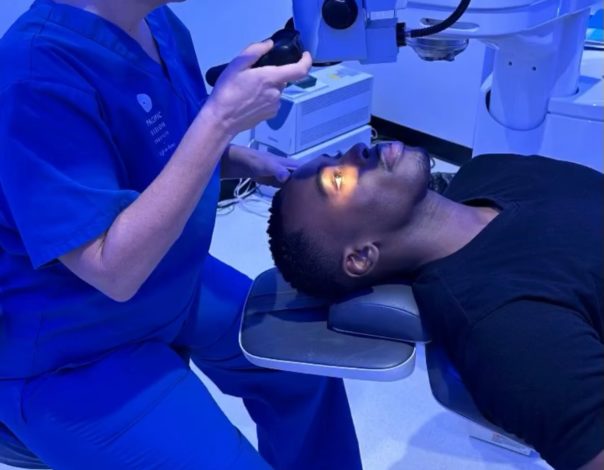As screens have come to dominate most of our lives, reports of ‘eyestrain’ have abounded all over the world. Some have turned to blue-light glasses as a means of warding off the negative effects of eyestrain.
Blue light can disrupt our sleep cycle, as it messes with our circadian rhythms. Patients who struggle with insomnia due to using their phones late at night may benefit from blue light glasses.
What are blue light glasses?
Blue light-blocking glasses are equipped with specially-crafted lenses that filter out the blue light emitted from screens. While many claim that they are an effective means of diminishing eyestrain, the jury is still out on their efficacy.
Can blue light glasses help with eye strain?
Nowadays eyestrain is often associated with blue light. It may surprise some to know that it actually isn’t that simple.
While digital screens are indeed the cause of this uncomfortable condition, it is actually classified as a broader condition known as computer vision syndrome (CVS), or digital eye strain. Some symptoms of this condition include:
- Watery eyes
- ‘Dry eye’
- Blurry vision
- Increased light sensitivity
- Chronic headaches
- Pain in the neck and shoulders
- Inability to concentrate
- Burning of the eyes
- Overly itchy eyes
- Difficulty keeping the eyes open
While blue light gets all the blame, there are other factors at play. For one, our eyes are constantly moving when watching and reading things on a screen, which is tiring. Beyond that, the glare and contrast of light can be tough on our vision. There is also the fact that we tend to blink less when focused on a screen, causing the cornea to become overly dry. These factors contribute to eye irritation.
There is also the fact that focusing on something close up, such as a screen or a book, forces our eyes to contract more. When looking out at more distant objects, the eyes have an opportunity to relax.
Are there other ways to protect against eye strain?
While blue light-blocking glasses might not be an effective solution, there are other protocols that can reduce symptoms of eye strain. Some of these include:
- Light sensitivity glasses (block out certain wavelengths of light)
- The 20-20-20 rule (Every 20 minutes look at something 20 feet away for 20 seconds)
- Artificial tears (eye lubricants that should be applied no more than 4 times a day)
What is the takeaway?
Blue light glasses are effective for certain patients with light sensitivity. That said, it is imperative that patients understand the true source of their eye strain. Screen use causes eye strain for a number of reasons. While blue light is often blamed as the main cause, there are actually other factors that contribute far more to it.
